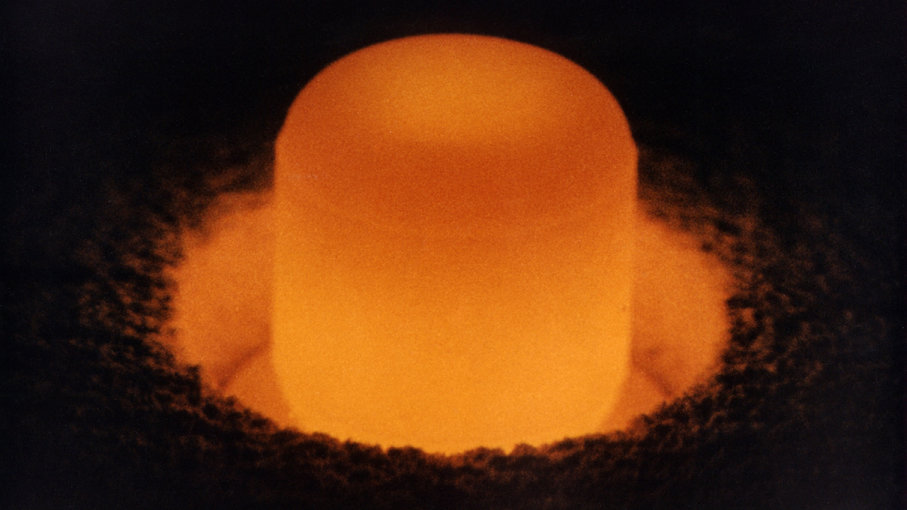Plutonium Shortage Could Cripple NASA’s Deep Space Exploration

A plutonium-238 oxide pellet glows from its own heat; the radioisotope is used as fuel to power spacecraft bound for deep space. U.S. DEPARTMENT OF ENERGY
A recent report by the Government Accountability Office (GAO) warns that NASA’s ability to mount future missions in deep space may be hindered by a shortage of plutonium-238 (Pu-238) fuel.
Pu-238 is used in radioisotope power systems. Also called “nuclear batteries,” these power sources produce electricity for spacecraft when their solar panels aren’t producing adequate juice — while surveying planets far from the sun, for instance. They’ve also been used to power probes such as NASA’s Curiosity Rover, which since 2012 has been exploring the surface of Mars, where dust storms can interfere with solar energy generation.
plutonium-238 oxide pellet
Plutonium-238 is stored in a ceramic form inside a protective cylindrical shell of graphite. The fuel source provides heat for the Curiosity Mars rover’s electrical power systems.
U.S. DEPARTMENT OF ENERGY/IDAHO NATIONAL LABORATORY/NASA
But Pu-238 isn’t something that can be easily obtained. As Wired reported back in 2013, the only known natural source of the isotope is from exploding stars, and with a half-life of just under 88 years, any Pu-238 produced out in the cosmos quickly decays and disappears before ever reaching Earth. The only way to obtain Pu-238? Scientists have to make it in nuclear reactors. Back in the 1970s and 1980s, that wasn’t a problem, because the nation’s nuclear weapons program could double as a fuel source for the space program.
But the U.S. source for Pu-238 dried up on 1988, when the U.S. Department of Energy’s Savannah River Plant in South Carolina shut down production as the U.S.-Soviet Cold War was dwindling down. From that point in time through the early 1990s, the U.S. purchased the plutonium it needed from Russia, but that country stopped selling it in 2009, probably because its own stock was shrinking.
In 2015, U.S. government scientists again started producing Pu-238 at the Oak Ridge National Laboratory, and other facilities. But it isn’t easy to make the fuel, and according to GAO, an agency that investigates issues on behalf of Congress, they’ve only been able to produce about 3.5 ounces (100 grams) of it so far, and production won’t ramp up to 3.3 pounds (1.5 kilograms) a year untl 2023 at the earliest. Meanwhile, according to GAO, the U.S. supply has dwindled to only about 77.2 pounds (35 kilograms), which includes only 37.5 pounds (17 kilograms) that meet the specifications for use in spacecraft. Some spacecraft power systems require as much as 7.5 pounds (3.4 kilograms) of Pu-238, so it’s not too hard to see the predicament NASA will find itself in, unless DOE finds a way to boost production.



 Creators of mankind
Creators of mankind Description of “Tall white aliens”
Description of “Tall white aliens” Where they came from?
Where they came from? About hostile civilizations
About hostile civilizations The war for the Earth
The war for the Earth “Tall white aliens” about eternal life
“Tall white aliens” about eternal life Video: “Nordic aliens”
Video: “Nordic aliens” Aliens
Aliens Alien encounters
Alien encounters The aliens base
The aliens base UFO
UFO Technology UFO
Technology UFO Underground civilization
Underground civilization Ancient alien artifacts
Ancient alien artifacts Military and UFO
Military and UFO Mysteries and hypotheses
Mysteries and hypotheses Scientific facts
Scientific facts


















